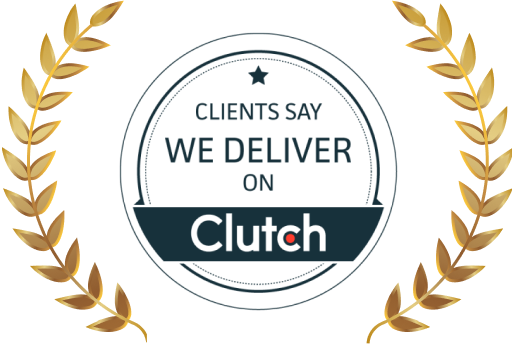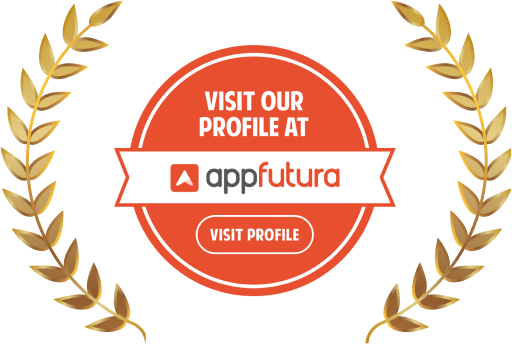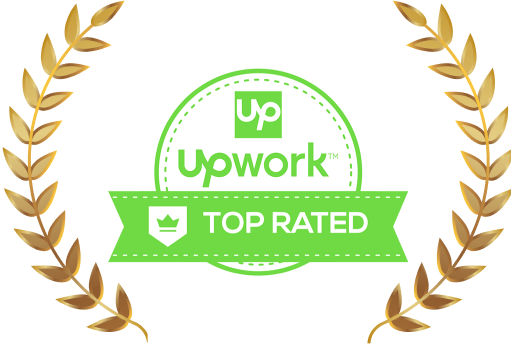Product Discovery and Design
Give your ideal a real shape. Our experienced business analysts, designers, and tech specialists can help your unique business vision into a successful reality.
Product Delivery Phases Of Agile teams
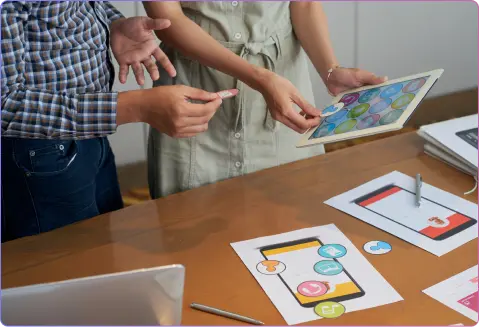
Product discovery is a step-by-step process of understanding, refining, and prioritizing client requirements. The process is centered around defining UI/UX and data flow, aligning the team, and selecting the right tools and technologies before starting product development. It is a clear roadmap that plays a vital role in helping development teams determine what features to build or prioritize, which functionalities to add, how many screens are needed, and many others to achieve product excellence.
Product discovery is an important phase of the software development lifecycle, ensuring that you are in the right way to solve the right problem and for the right audience. The discovery phase sets the foundation for the smooth and successful development of the product.
-
The goals of the product discovery phase:
-
 Clearly define user’s problems
Clearly define user’s problems
-
 Create solutions that satisfy the customer's
expectations
Create solutions that satisfy the customer's
expectations
-
 Validate the ideas in the market
Validate the ideas in the market
-
 Increasing chances of product success
Increasing chances of product success
-
“Customers can save thousands of dollars and plenty of time on development by implementing the right product discovery process.”
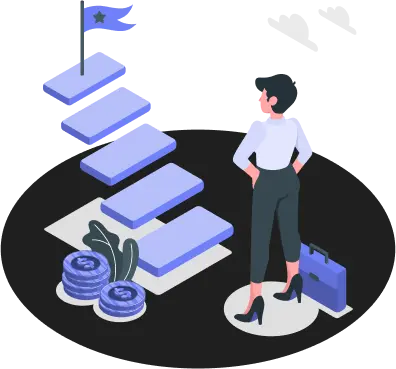
-
Why do Businesses Need Product Discovery?
-
 Clear and Precise Understanding of Goals
Clear and Precise Understanding of Goals
-
 Build result-oriented Strategy
Build result-oriented Strategy
-
 Reduce Development costs and time
Reduce Development costs and time
-
 Cater To Right Targeted Audience
Cater To Right Targeted Audience
-
 Uncover the right assumptions and risks
Uncover the right assumptions and risks
-
 Defining the right problem statement
Defining the right problem statement
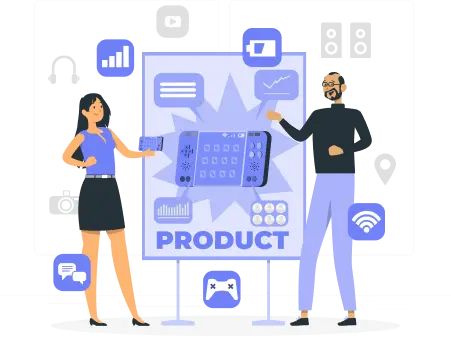
When Does A Business Need Product Discovery?
Product discovery is deciding every element of what to build. Developing an idea based on assumptions and without any strategy can be risky. You may end up wasting your efforts, time, and money.
-
Here is a list of some ideal situations when a business should go for a product discovery process:
-

Business expansion:
You might require a discovery process to expand your business by launching your products and services at different locations. It might involve in-depth research around the targeted audience, competitors, product scope, and market research.
-

New Product Development:
If you brainstorm an idea for developing a new product but decide to discover the user personas, their needs, preferences, market trends, and behavior. Product discovery helps you analyze what you have to build and what your customers are looking for.
-

Upgrading Products:
You need a product discovery when you plan to incorporate a new feature or functionality into your product. In such a case, it is crucial to find and analyze what problem it will solve and its overall impact on your existing product and user experience.
-

Business Mergers:
When there is a merger between two companies, the system, tools, and processes require consolidation. Here product discovery is necessary to focus on mutual problems, identify solutions that fulfill the company's needs, and help perform smooth operations.
Outcomes of the Product Discovery Process
Product discovery is one of the crucial stages of the product development lifecycle. It helps businesses mitigate risks, eliminate product failures, have faster market time, and reduce development costs.
Here listed some ideal outcomes of the product delivery process:
Understanding the Targeted Audience
who they are, what they need, what problems they have, and what values to offer.
Identifying Problems
identifying problems, how it affects the targeted users, and how you can solve them with your product.
Clear vision of the product
establishing a clear vision that meets your business needs and targeted customer's needs.
Idea Validation
validate your idea in the market, analyze the customer's responses, and enhance your product based on feedback received.
Teams Involved In Product Delivery Process
To make the product discovery process successful, it is required to have the complete involvement of all the team members. The configuration of product discovery teams depends on the project's complexity and size. The team members included in the following process with their respective responsibility:
-
Project Manager
to plan meetings with clients to obtain insights and documentation and coordinate with team members to understand the project requirements.
-
Business Analyst
Analyzes current market conditions and offers solutions.
-
Stakeholder
manages the project budget.
-
Solution Architect
Identify an approach to solve each problem statement.
-
Tech Lead
Analyzes current market conditions and offers solutions.
-
UI/UX Expert
Identify an approach to solve each problem statement.
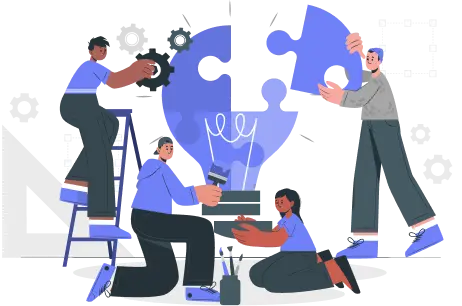
Product Discovery Phases
 Phase 1 : Ideation and Team Alignment
Phase 1 : Ideation and Team Alignment
In the initial stage of product discovery, we gather the requirements for your product, prioritize them, and refine them while creating a clear roadmap before development starts. We aligned the product discovery team comprising the Project manager, stakeholders, business analyst, solution architect, tech leads, and UI/UX experts to discuss the project requirements and deliverables.

 Phase 2 : Performing User Research
Phase 2 : Performing User Research
In this phase, we perform in-depth market analysis and user research to identify your user personas. Also, check what problems our product will solve, if there is any need for your product in the market, and lastly, what your competitors are doing. Here we also define features to be included in the product that makes your product stand out in the market. Prioritize the features that need to be added to cater to the needs of your targeted customers.
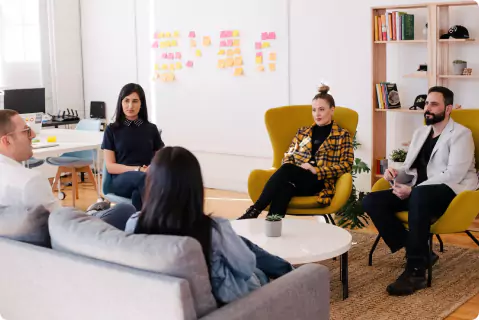
 Phase 3 :
Identifying Solutions
Phase 3 :
Identifying Solutions
After performing in-depth market research and business requirements analysis, we identify the optimal and market-fit solutions to build the product. A clear product vision and goals have now been identified for our team to develop a prototype. As a next step, the technical experts will determine the product's best UX & data flow and the tools/technologies used to create it.

 Phase 4 :
Wireframing and Prototyping
Phase 4 :
Wireframing and Prototyping
Now that we have the idea and solution ready, it's time to start designing the product's user flow and creating the wireframe. After the wireframe, we start with a fully-functional and working prototype of the product that is clickable and permit users to visualize or interact before the final product is developed. It is the early version of your final product. The user will get an interactive and clickable experience of the prototype. It will help businesses decrease the development cost, as clickable prototypes are created to validate your idea without any development efforts.
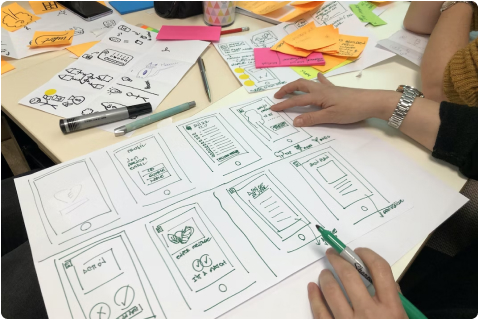
 Phase
5 : Sprint Planning
Phase
5 : Sprint Planning
Implementing agile is the best way to get your desired product efficiently and smoothly. We ensure that the product is developed in the sprint from the initial stage till the launch. Our product manager cum scrum master conducts the sprint planning and prepares milestones that the team should achieve in each sprint. The big development processes are broken down into smaller modules and assigned in each sprint for the dedicated team. The overall product development turns out to be great and smooth when working in an agile way. The timeframe and tasks are associated with each sprint to get the product deliverables faster.

 Phase 6 :
Initiate Product Development
Phase 6 :
Initiate Product Development
Now, as we have already created a prototype of your product, it's time for clients to decide whether they need an MVP(Minimum Viable Product) or a full-fledged product. If they choose MVP, then a minimal version of the product is developed with limited features and further enhanced depending on the customer feedback. A final product is built and ready to launch if they go for a full-fledged product. We follow agile practices in both cases to deliver a great product build under multiple iterative sprints.

Have a project in
mind?
Talk to our experts directly to learn how we can transform your ideas into reality.
talk to our experts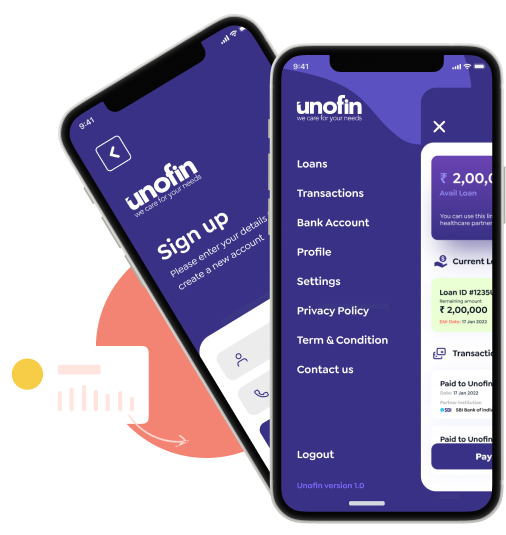
Don't miss out on the opportunity to transform your business.
Sign up now to learn more and get started on your mobile app development journey today!

